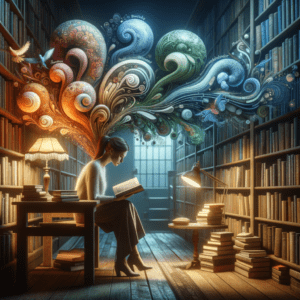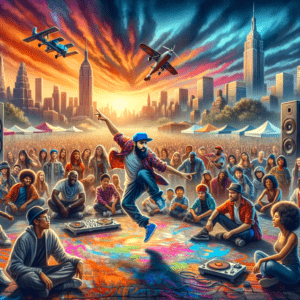You know, it’s pretty hilarious how, as grown-ups, we often completely miss out on the treasures tucked away in the children’s section at the bookstore. Is it because we fancy ourselves too advanced for them now? Or maybe we assume they are too basic to pique our interest? Oh, but let me tell you, those vibrant pages hold a universe loaded with wonder, wisdom, and whimsy that’s begging to be rediscovered. I’ve found so much comfort in their simplicity and a joy that’s so refreshingly creative. It’s such a pity more adults don’t dive into this bubbling wellspring of imagination and emotion. Here I am, inviting you on a journey back to those delightful reads that are absolutely worth every moment, even if you’ve long swapped your coloring book for tax forms.
The Magic of Nostalgia
Ah, nostalgia! Who doesn’t love the warm fuzzy feeling of reminiscing every now and then? There’s something super comforting about slipping back into the cozy stories of our childhood. They feel like a hug, bringing back the days when our biggest drama was missing playtime. Reading “Charlotte’s Web” now, I found myself moved in ways I hadn’t anticipated. E.B. White’s knack for nudging heavy themes like friendship, loss, and courage through such an approachable and profound lens caught me by surprise. As a kid, the chatting animals and their little escapades on Zuckerman’s farm enchanted me. Yet now, as an adult, I find myself nodding at the depth of their conversations—they’re grappling with issues and I’ve, shockingly, realized they reflect real stuff I get now.
Let’s not even get started with the “Harry Potter” series. These books were like, in sync with my teenage years, giving me a magical journey alongside Harry and his pals. Reading them again now, there are these layers and meanings I didn’t catch before. J.K. Rowling’s clever intertwining of love, sacrifice, and identity throughout Harry’s story hits in waves, letting every spell, battle—just about every message—resonate louder, depicting not only an external war on evil but also the internal wars we fight within ourselves.
Wit and Wisdom in Simplicity
The wit and wisdom encapsulated in children’s books often cuts through like nothing mature literature can quite achieve. Take A.A. Milne’s “Winnie-the-Pooh.” It’s charming and gentle with humor that’s warm and endearing. Pooh’s innocent musings hold a philosophical whammy that makes you ponder life in ways the adult mumbo jumbo just… doesn’t. Watching Pooh and his pals pottering about somehow gets more touching with age.
Books like “The Little Prince” by Antoine de Saint-Exupéry mash up philosophy and surreal fantasy in the best way. While we might have been captivated as kids by the whimsical journey, re-reading it now unveils a reflection on humanity’s quirks and the bizarre adult obsessions with numbers and a perpetual sidelining of what truly counts. It’s in these stories that we locate insights about love, loss, and the quintessence of companionship that still resonates as we journey through life.
Illustrations—The Silent Storytellers
Oh, let’s spare a moment to revel in the sheer beauty of illustrations! They often shout louder than any word possibly could. I recently got lost in “The Arrival” by Shaun Tan. It’s a graphic novel, totally aimed at kids, but honestly… it tugs at my grown-up heart. This wordless masterpiece narrates the roller coaster of immigration and adaptation more pointedly than any full-blown novel. The artwork speaks, taking you on an emotional ride, with images that you’ll just keep carrying long after you close the book.
My hat’s off to Maurice Sendak’s “Where the Wild Things Are” too. As a kid, it was bright and bustling with tales of monsters and adventures. Now, its stunning visuals paired with an all-too-real narrative of imagination, rebellion, and acceptance brings back the inner child urges not to just fade away.
Breaking Boundaries, Overcoming Prejudices
Children’s books sometimes dare to tackle the sticky subjects adults shy away from, educating and prompting us to think differently. “Bridge to Terabithia” by Katherine Paterson, bruise me up! The story glides through themes of friendship and loss, leaving heartache between Jesse and Leslie as raw and palpable at thirty as it was at ten. It stirs that raw honesty, giving us a chance to reconnect with feelings we’re often told to tuck away.
“The Giver” by Lois Lowry stands out too, challenging conformity, control, and showing freedoms slipping through societal ideals. While Jonas’s mature journey speaks to teenagers, his deeper look into a society engineered of emotion makes adults ponder humanity, empathy, freedom, and all the rest in ways few grown-up critiques can.
Resonating Themes of Humanity
Kids’ books have this magical ability to both capture and teach, speaking to the child in us—the one we used to be and often, still are. L.M. Montgomery’s “Anne of Green Gables” teems with timeless tales of love, hope, persistence, and a sense of home that hardly fades. Anne’s vivid imagination and indomitable spirit remind us of the power in embracing who we truly are, flaws and all.
Remember “Matilda” by Roald Dahl? I cheered for her wits and wondered at her magical powers as a kid. But re-reading it now, I’ve become much more in tune with the dark humor and commentary on cruelty and negligence—and, more importantly, the incredible spirit it takes to overcome it with wit and kindness.
The Universal Appeal of Joy
The very joy and wonder that tugged at us as kids? It doesn’t fade. Stories like “The Wizard of Oz” by L. Frank Baum subtly mix magic with reality. It whispers timeless narratives that tug us into exploration and self-realization. Despite life’s many tornadoes, there’s that comforting message—home’s the heart we carry inside.
Then there’s “Alice’s Adventures in Wonderland” by Lewis Carroll. The ridiculousness and dream-like narrative gives us something far beyond mere whimsy—a playful escape from a world that demands far too much seriousness. Why not ponder, ‘Why is a raven like a writing desk?’ though the answer barely even matters?
A Celebration of Diversity
Children’s literature today acts as a conduit for cultural understanding and empathy. Books like “Esperanza Rising” by Pam Muñoz Ryan unveil worlds different from ours yet deeply woven together. Stories wash over us with struggles, layers of growth amidst cultural displacement, presenting universal sentiments of strength and heart.
Grace Lin’s “Where the Mountain Meets the Moon” beautifully stitches Chinese folklore into its storyline. It unfolds an adventure of hope, a reminder of cultural landscapes that reflect universal experiences about family, dreams, and sacrifice. And diving back as adults, we catch these narratives anew, recognizing the vibrant diversity interwoven in our tales.
Back to Being Human
At their core, children’s books whisper reminders of pure human elements—curiosity, wonder, empathy. Adult life can obscure these essentials beneath duties and survival. Diving into these stories once more, it kinda feels like a soft nudge to keep that childlike spark of inquisitiveness alive before it dulls out.
Because the real magic in children’s books lies in their aptness to skip across ages, casting words that touch us wherever we are in life. They’re reminders that beneath grown-up complexities lies a simple truth: the best insights sometimes come wrapped in simplicity.
Curled up with ‘Goodnight Moon’ or chuckling at Pippi Longstocking’s antics, I’m swept back into seeing the world through younger eyes—an untainted, potential-rich world, far removed from today’s cynicism. It’s a quiet nudge to cherish simplicity, the small victories, and to hold on to that spark of magic within.
So, for those of you who haven’t cracked open your childhood book collection in a while, I utterly encourage you—it’s like finding new veins of wisdoms tucked within. Relish these tales that once wowed you and observe what fresh insights they bring you now. Because if I’ve learned one thing, it’s that good stories never really let go. They morph, change, and always seem to welcome us back with open arms, or pages, if you will.
At the close of it all, these books remind us starkly of the raw human experience—our fears, dreams, loves, and the amazing power of storytelling. So why not pick one up and let yourself float away? You might find that rediscovering these stories as an adult serves up a thrill that rivals, heck even trumps, the joys of reading them as a child.















